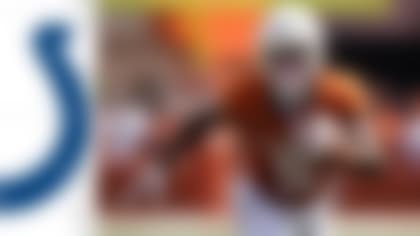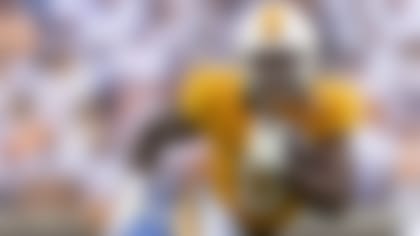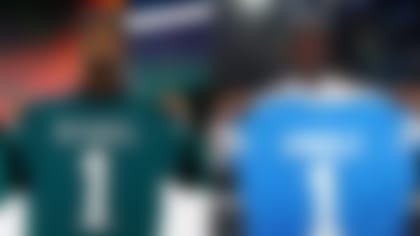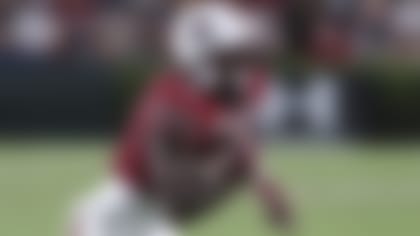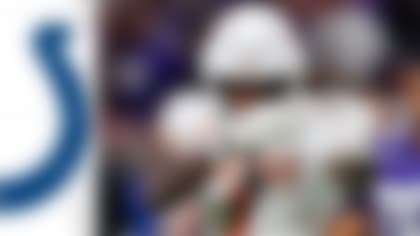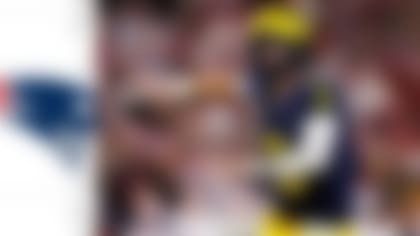In the NFL, coaches and scouts refuse to use injuries as an excuse for lackluster performances on the field. However, it is apparent that teams are negatively impacted when top players leave the field for extended absences. Just look at the disappointing 2011 campaigns of the Chicago Bears, Kansas City Chiefs and Tennessee Titans -- these are three prime examples of how the loss of a key player can bury a team's postseason dreams.
With three of the NFL's emerging stars slated to return to action in the fall, let's take a look at how each will impact his squad in 2012:
Jay Cutler, QB, Chicago Bears
The Bears were starting to hit their stride offensively when Cutler was sidelined with a broken thumb on his throwing hand that prematurely ended his season. At the time of his injury, Cutler was completing 58 percent of his passes with 13 touchdowns against seven interceptions, while sparking a five-game winning streak that saw Chicago hit the 30-point mark four times. But the Bears' offense fell apart without their star quarterback under center, failing to generate more than 21 points in any of their remaining six games, going 1-5 to close the season.
How does his return impact the Bears' offense?
Cutler's return will ignite an offense that should be vastly improved in 2012. The Bears added a pair of playmakers outside in Brandon Marshall and rookie Alshon Jeffery with the size and athleticism to create problems on the perimeter. Marshall, in particular, is a perennial Pro Bowler with a penchant for making big plays over the middle of the field. He topped the 100-catch mark twice during his three seasons with Cutler in Denver, and gives the star quarterback a legitimate No. 1 receiver to target in critical situations. Not to mention, Chicago added another weapon to the backfield, signing free-agent RB Michael Bush.
Jamaal Charles, RB, Kansas City Chiefs
Prior to last season, Charles had already become one of the most feared runners in the NFL with a combination of speed, quickness and burst that routinely led to big plays on the perimeter. Slithering through traffic with an assortment of jump cuts and hesitation moves and exploding through creases on cutback runs, Charles posted consecutive 1,000-yard seasons in 2009 and 2010 (additionally ranking among the league leaders with eight runs of 40-plus yards during that span). With a dynamic runner setting the pace, the Chiefs led the league in rushing in 2010, securing a playoff berth behind a run-first approach that bludgeoned opponents at the point.
In 2011, though, the Chiefs' offense struggled without Charles on the field after his season-ending knee injury in Week 2 (one week after Eric Berry's season-ending knee injury rocked Kansas City's defense). Although the unit finished 15th in rushing yards, the Chiefs only scored 13.2 points per game (31st in the NFL) and ranked 27th in total offense. That's not the kind of production that leads to postseason success in today's NFL.
How does his return impact the Chiefs' offense?
Charles adds another dimension to K.C.'s offense with his explosiveness. He is capable of scoring from anywhere on the field, and his presence in the backfield will force opponents to drop an extra defender in the box. Although that would appear to neutralize the effectiveness of the Chiefs' running game, Charles' ability to find creases on the backside could allow Kansas City to thrive despite being outnumbered at the point of attack. In addition, Charles' return will enable the Chiefs to get back to the rotational system that allowed them to pummel opponents in 2010. With free-agent addition Peyton Hillis teaming with Charles to create a formidable tandem, Kansas City should be able to effectively grind it out on opposing defenses.
Also, Charles' return should lead to better production from Matt Cassel and Dwayne Bowe in the passing game. With most teams utilizing eight-man fronts on early downs to slow down Charles, Bowe will see one-on-one coverage on the outside, which will lead to easy completions for Cassel on "Bang-8's" (skinny posts) and deep outs. Given their remarkable production in 2010 utilizing a similar approach, the Chiefs' offense should be more explosive this fall.
Kenny Britt, WR, Tennessee Titans
At the beginning of last season, it was apparent that Britt had developed into one of the top big-play threats in the NFL as a pass catcher. He has averaged 17.5 yards per catch throughout his career, amassing 10 receptions of 40-plus yards as the Titans' primary vertical threat. Prior to his season-ending knee injury in Week 3, Britt showed signs of developing into an elite caliber receiver with the skills to impact the game like Calvin Johnson and Larry Fitzgerald. That's certainly lofty praise for a player in his third professional season, but his back-to-back 100-yard games to open the 2011 campaign showcased a remarkable combination of speed and athleticism.
Without Britt on the field to stretch the defense, the Titans were unable to generate big plays in the passing game. As a result, opponents tightened up their coverage and forced Tennessee to utilize a "dink and dunk" approach to move the ball down the field.
How does his return impact the Titans' offense?
If Britt returns to full health in 2012, the Titans should be able to push the ball down the field with more success. Britt excels at running the vertical portion of the route tree and he will team up with Kendall Wright to give Matt Hasselbeck and/or Jake Locker a pair of deep threats on the perimeter to complement Nate Washington and Jared Cook over the middle. With Britt attracting double-coverage on many downs, the Titans' other receivers could terrorize opponents in isolated matchups.
The Titans could also see Chris Johnson regain his big-play ways with Britt back on the field. The 6-foot-3, 215-pounder will keep defenses from dropping an extra defender in the box extensively, which will create more room for Johnson to operate between the tackles. Factoring in Johnson's speed and the effectiveness of the Titans' zone-based running scheme, this is frightening stuff for opposing defenses. If the Titans' offensive line is able to work together at the point of attack without having to account for an extra defender in the box, Johnson could produce the long runs that made him one of the most dangerous players in the NFL.
Follow Bucky Brooks on Twitter @BuckyBrooks


